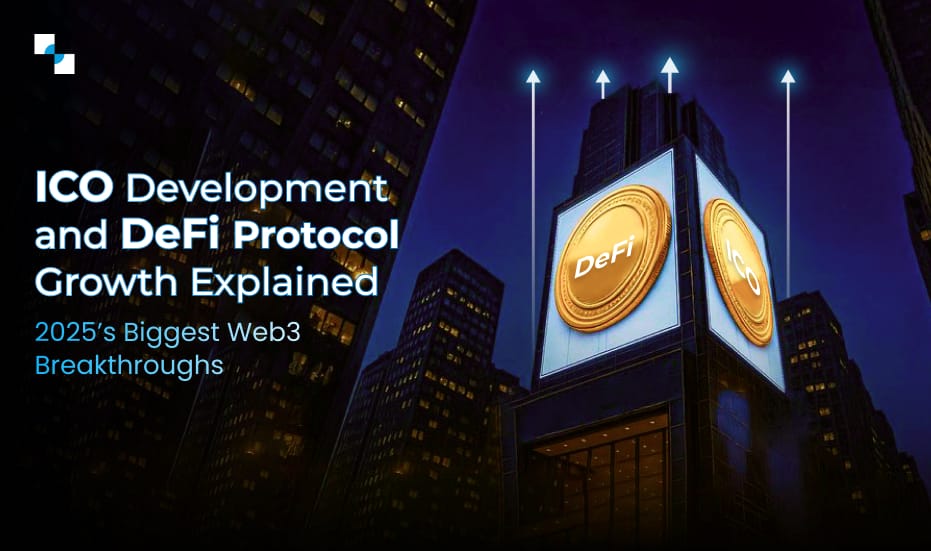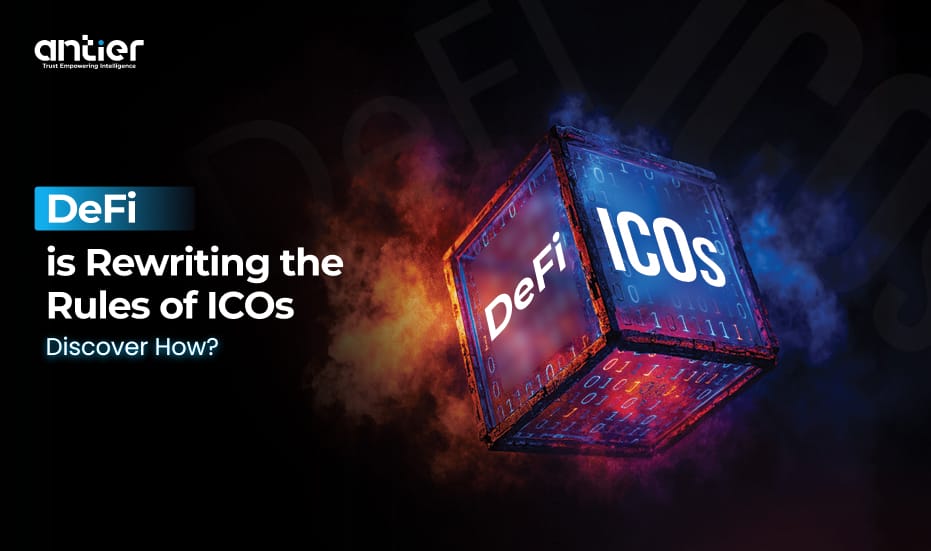The telecommunications industry, an omnipresent pillar of global connectivity, is witnessing an epochal shift in capital acquisition methodologies. Conventional funding mechanisms—laden with regulatory bottlenecks, geographical constraints, and exorbitant intermediary costs—are rapidly becoming archaic in an era defined by blockchain-driven financial instruments.
The blockchain revolution in telecom is accelerating at an unprecedented pace. Recent market projections reveal that blockchain in the telecom market is expected to skyrocket to USD 29,547.4 million by 2031, growing at a staggering CAGR of 67.47%. This explosive growth underscores the industry’s shift toward decentralized financial models, where ICO-driven capital acquisition is rapidly emerging as a transformative funding strategy. As telecom enterprises embrace blockchain for enhanced security, automation, and transparency, ICO token development is positioned as a strategic enabler of this multi-billion-dollar evolution.

Source link: https://www.verifiedmarketresearch.com/product/blockchain-in-telecom-market/
Challenges in Legacy Telecom Fundraising
Telecom conglomerates have relied on capital-intensive frameworks such as syndicated loans, public equity issuance, and institutional debt instruments. While effective, these methodologies present significant impediments:
- Regulatory Friction: The intricate compliance landscape in telecommunications finance imposes protracted approval cycles and heightened administrative burdens, stifling rapid capital deployment.
- Investor Accessibility Constraints: Traditional capital acquisition mechanisms are often restricted to localized institutional investors, significantly limiting liquidity inflows.
- Escalated Transaction Costs: Engaging financial intermediaries—investment banks, underwriters, and legal advisors—introduces onerous expenses that dilute the effective capital raised.
- Slow Capital Deployment & Market Delays: Traditional funding routes like IPOs or debt financing can take months or even years, causing delays in network expansions and service rollouts.
- High Credit Dependency & Risk Exposure: Relying on institutional loans or venture capital often results in high debt burdens, stringent repayment terms, and potential equity dilution.
- Limited Funding for Emerging Markets: Traditional financial institutions often hesitate to fund telecom expansions in emerging economies due to perceived risks, limiting infrastructure growth in high-demand regions.
Looking for a faster, more efficient way to fund telecom expansion? ICO token development revolutionizes fundraising by providing global investor access, reducing overhead costs, and streamlining capital deployment. By leveraging blockchain’s transparency and automation, telecom businesses can secure funding with agility, ensuring seamless network growth and innovation without the limitations of traditional financing models. Scroll down to chec how!
ICO Development Solutions: A Disruptive Capital Formation Mechanism
“Telecom’s future is decentralized—ICO development fuels capital efficiency, scalability, and global investor access.”
ICOs leverage cryptographic tokenization and distributed ledger technology (DLT) to facilitate borderless, democratized fundraising. Telecom firms can issue bespoke utility or security tokens, allowing investors to acquire digital assets that confer various intrinsic utilities, including network privileges, revenue-sharing models, or governance rights within decentralized telecom ecosystems.

Strategic Advantages of ICO Development for Telecom Enterprises
- Unrestricted Global Investment Pool: ICOs transcend geographic barriers, enabling telecom ventures to access a diverse and liquid investor base across multiple jurisdictions and fostering high-capital inflows without regional limitations.
- Capital Maximization with Minimal Overheads: By eliminating financial intermediaries, ICOs ensure that a substantial proportion of raised funds is directly allocated to network expansion, infrastructure scalability, and next-generation telecom innovations.
- Faster Market Entry & Agile Capital Deployment: Unlike conventional funding channels, ICOs leverage smart contracts for seamless and rapid fund transfers, allowing telecom firms to accelerate project rollouts and maintain a competitive edge.
- Investor-Centric Tokenomics for Sustained Engagement: ICO frameworks can integrate staking rewards, tiered access to telecom services, and revenue-sharing models, ensuring investor retention and long-term ecosystem growth.
- Blockchain-Backed Security & Transparency: With an immutable ledger, every transaction is cryptographically recorded, mitigating fraud risks and fostering regulatory compliance while boosting investor confidence.
Now that you have understood the benefits offered by ICO development solutions, majorly to the telecom industry, it is recommended that you now understand the concept and teh complete process of ICO token development, especially for fundraising telecom services. Scroll down to check the process.
Technical Roadmap for Implementing ICOs in Telecom
Navigating the ICO landscape for telecom funding isn’t just about launching tokens—it’s about strategic execution. As a telecom investor, understanding the ICO development process ensures seamless fundraising, regulatory compliance, and long-term sustainability. A well-structured roadmap defines tokenomics, smart contract integrity, and investor engagement, positioning your telecom venture for scalable success in the decentralized financial ecosystem.
Step 1: Strategic Token Architecture & Blockchain Selection
The ICO development process begins with creating a robust tokenomics framework tailored to telecom infrastructure financing. This entails determining token utility—whether as a security, utility, or hybrid asset—alongside supply mechanisms, deflationary models, and reward structures. Blockchain selection is pivotal, considering factors like scalability, transaction finality, and smart contract execution efficiency. Ethereum, BNB Chain, or layer-2 networks may be leveraged to optimize gas fees and interoperability for seamless telecom service integration.
Step 2: Smart Contract Development & Compliance Protocols
The backbone of ICO execution lies in smart contract development, where self-executing, blockchain-embedded protocols govern token issuance, vesting schedules, and fundraising milestones. Telecom enterprises must integrate KYC/AML-compliant smart contracts to ensure adherence to global financial regulations while implementing fail-safe mechanisms such as multi-signature wallets, investor whitelisting, and automated refund triggers to fortify security and regulatory alignment.
Step 3: ICO Platform Development & Token Sale Mechanism
A high-performance, decentralized ICO launchpad is engineered to facilitate seamless investor participation. This involves front-end UI/UX development for investor dashboards, back-end smart contract integration for automated token distribution, and multi-chain wallet connectivity for diverse payment options. Staged fundraising models—including private sales, pre-ICOs, and public token offerings—are strategically embedded to optimize capital influx and incentivize early backers through tiered pricing structures.
Step 4: Security Auditing & Blockchain Infrastructure Optimization
To mitigate cyber threats and ensure system integrity, comprehensive security audits are conducted on smart contracts, token minting protocols, and ICO development solution architecture. Telecom-focused blockchain nodes must be optimized for high-throughput data validation, preventing network congestion during peak fundraising phases. Penetration testing, vulnerability assessments, and cryptographic encryption layers are integrated to reinforce investor confidence and fortify capital deployment frameworks.
Step 5: Market Deployment, Token Liquidity & Post-ICO Governance
Post-launch, telecom ICO tokens must be strategically listed on decentralized and centralized exchanges to drive liquidity and secondary market adoption. Automated market-making (AMM) protocols, liquidity pools, and staking mechanisms are deployed to maintain value stability. DAO-driven governance models can be implemented, enabling token holders to influence key telecom infrastructure decisions while ensuring ecosystem sustainability through transparent voting mechanisms and treasury management protocols.
This five-step roadmap ensures a methodical, compliance-driven approach to ICO development, enabling telecom enterprises to leverage blockchain’s transformative potential while securing sustainable, investor-backed capital formation. Let me know if you need further refinements! However, it is highly recommended that you partner with a profound ICO token development company that can help you launch an ICO immediately.
Hire Certified ICO Token Development Professionals Today!
As the telecommunications sector accelerates toward hyperconnectivity, blockchain-powered capital formation will be instrumental in reshaping industry economics. ICO token development presents a high-caliber, technically astute fundraising conduit that not only democratizes investment accessibility but also fortifies financial autonomy for telecom operators. By embracing this digital asset revolution, telecom enterprises can architect a decentralized financial ecosystem poised for unbridled innovation and scalable infrastructure proliferation.







